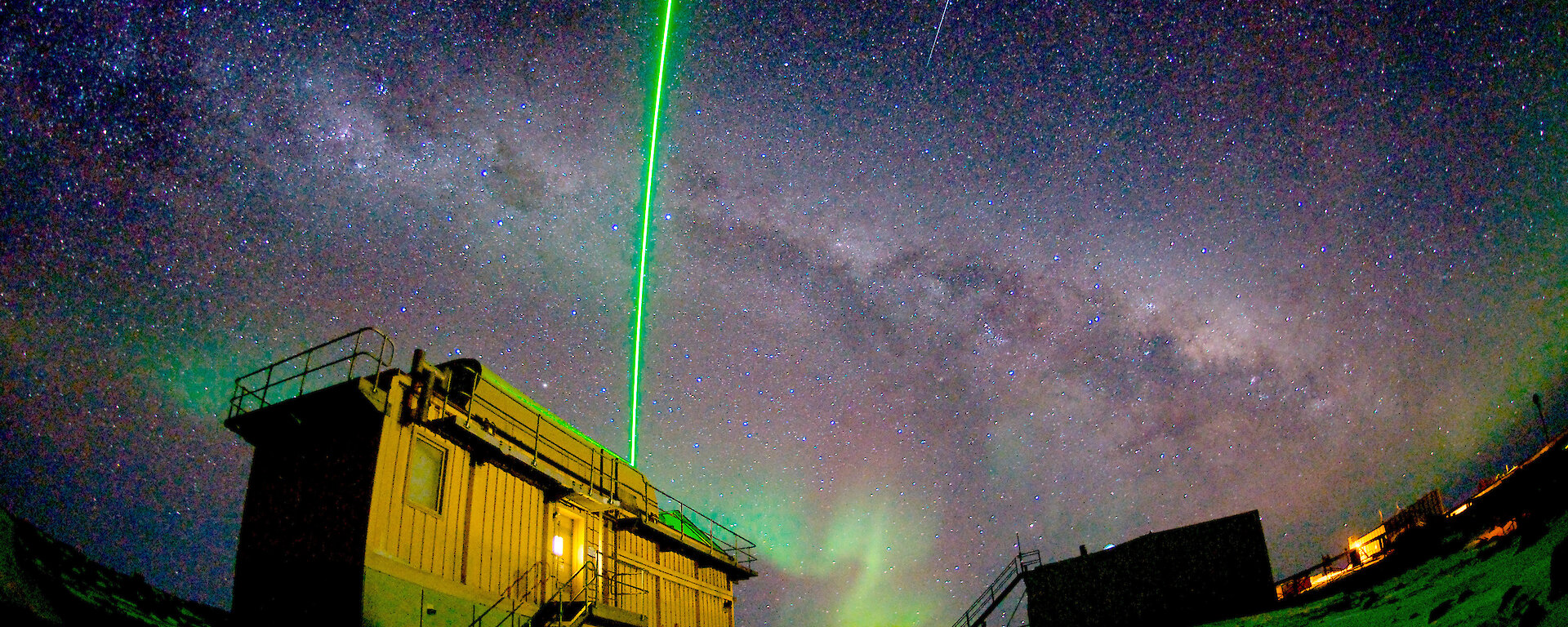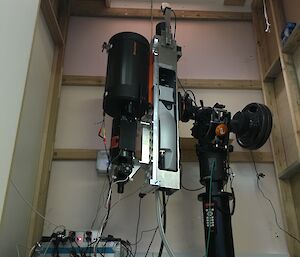An intense green laser beam will soon be probing the atmosphere above Antarctica to infiltrate the secrets of super-cooled clouds.
The Light Detection and Ranging (LIDAR) instrument arrived at Australia’s Davis research station today, aboard the icebreaker Aurora Australis.
The LIDAR sends short pulses of light up into the atmosphere, which reflect off the clouds and scatter back to Earth.
Australian Antarctic Division Principal Research Scientist, Dr Andrew Klekociuk, said the LIDAR will reveal more about the composition, thickness and height of the super-cooled clouds that dominate Antarctic skies.
“These clouds are incredible because they remain as liquid water down to almost minus 40 degrees Celsius, rather than turning into ice crystals,” Dr Klekociuk said.
“This is in contrast to the Northern Hemisphere, where the clouds would freeze under the same extreme conditions.
“We think this anomaly has to do with the lack of pollution in the Antarctic atmosphere, but we have very few measurements to confirm this, which is what our research is all about.”
The super-cooled clouds scatter the radiation from the sun in a different way from the Northern Hemisphere, keeping the surface temperature over the Southern Ocean and Antarctica cooler than it otherwise would be.
It’s hoped the data collected by the LIDAR over the next 12 months at Davis will help forecasters improve their climate models across the globe, and provide information to track long-term changes in the Antarctic atmosphere.
This research is part of a two year study looking at the properties of these clouds. Last year scientists used the same LIDAR on Macquarie Island, and a suite of other instruments on ships, aircraft and satellites across the Southern Ocean.
The Aurora Australis will be at Davis station for a week to undertake resupply, deliver summer personnel and retrieve wintering expeditioners.
The ship is due back in Hobart in early December.




